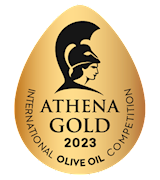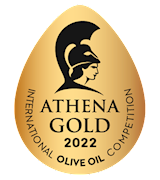TABLE OF CONTENTS
Best European Honey Types
Podkarpacki miód spadziowy is honey that can be either in crystallized or liquid form, gathered and produced in 17 forest districts and in two national parks in Poland. The honeydew must be gathered from the European silver fir (Abies alba), spruce (Pinaceae Picea) and Scots pine (Pinus sylvestris).
This unique honey is dark brown with greenish hues to almost black in color and has a thick and viscous texture throughout. After the crystallization process, its texture becomes finely granular and the color gets lighter. The taste is delicately mild and sweet, with a spicy scent reminiscent of the needles of the fir and pine trees.
Miód wrzosowy z Borów Dolnośląskich is a unique heather honey gathered from the lower Silesia Forests in Poland. It is amber or tea-colored and has a thick, gelatinous texture. Its unique qualities are due to the area where the nectar is obtained - a flora of dense heaths and lush vegetation that has been preserved nearly intact, as it was home to military training sites until recently.
The honey has a high concentration of heather pollen and crystallizes easily into medium-sized granules. The scent is intense and strong-smelling while the taste is slightly bitter, sweet and sharp. It is the most famous honey of the Dolnoslaskie Voivodship and is usually eaten on its own, with fresh bread, or presented as a unique gift from the region.
Miód drahimski is a unique honey gathered in the Czaplinek, Wierzchowo, Barwice and Borne Sulinowo municipalities in Poland. It comes in five varieties. Buckwheat honey is dark brown and has a coarse texture and a sharp, intense, pungent flavor.
Heather honey is amber to orange in color, has a thick gelatinous texture and a sweet, intense, slightly bitter flavor. Colza honey is almost colorless, has a sticky texture and a mild, delicate, slightly bitter flavor. Lime honey is green to amber in color, has a gritty texture and a sharp and bitter flavor.
Miód kurpiowski is a unique kind of honey gathered and produced in the Kurpie region, northeast of Warsaw in Poland. The tradition of beekeeping in the area goes back to the 15th century when the honey was shipped to the royal court, aristocrats and monasteries.
Today, the honey in the region is made according to the strict regulations of traditional production, making sure that it contains all the enzymes and compounds as it did in the past. Due to the diversity of the flora in the region, the trees, plants and herbs give Kurpie honey its delicate, spicy aroma, and acacia, honeydew, linden or mixed-flower flavors.
Produced in the districts of Gortynia and Mantineia in the Arcadia prefecture, Meli Elatis Menalou Vanilia is the first Greek honey acknowledged by the European Union as a protected product. At least 80% of this honey comes from black fir, while the rest is mixed flower honey.
This world famous product owns the 'vanilia' name to its color that can be described as being between pearly white to caramel. The honey is not collected from the blossoms, but rather honeydew produced by microorganisms on the trunk of the black fir.
Miel de Provence is honey produced from one or more flowers from the wild flora of the French regions of Provence-Alpes-Côte-d'Azur, Drôme and Gard. The single-flower honeys have a floral taste while multi-flower kinds of honey have a 'planty', fruity taste.
The honeys are unique in their organoleptic qualities deriving from the specific Provence flora, with flowers such as lavender and rosemary making unique lavender honey, and rosemary honey, made from only one type of flower. The products are packaged in glass jars and ready to be enjoyed, either for breakfast with toast and butter, or used in a variety of tea drinks.
This Portuguese variety of honey has great nutritional value, and it is made by the Apis mellifera bee species from the Iberian Peninsula. These bees are kept in the municipality of Lousã, near the city of Coimbra, and they feed on the nectar of local flowers and chestnut trees.
The honey is thick, syrupy, and dark amber in color, while its flavor is intense with notes of wood and heather. It can crystallize at low temperatures, at which point the intensity of its color. It can be eaten as raw, used as a sweetener and a sugar substitute, or can be incorporated into various traditional cakes and desserts.
Ikarian honey is a Greek type of honey produced on the island of Ikaria in the Aegean Sea. The honey is prized for its high quality, which is a result of the unique geographical and topographical attributes on the island. It has a medium to dark brown color coming from the herbs, pine trees, and other island flora.
The flavor is very rich and the honey is unfiltered, unheated, and unpasteurized. As there is no industrial farming on the island, the pollen and nectar collected by the bees are free of pesticides and chemicals. Filled with natural vitamins and minerals, the honey is often consumed by locals every day by spoonfuls, and it is believed that it is the reason why most of the people on the island live over the age of 90.
Pefkothymaromelo Kritis is a special variety of thyme and pine honey produced In Crete, an area which has the highest density of bees in the world. The sediment of this honeydew, or forest honey, contains pollen grains from up to 20 different plants in each honey sample.
Pefkothymaromelo Kritis has medium clarity and sweetness, and its flavor is mild, with floral notes and hints of wood and resin. It remains fluid for at least 12 months from the day of harvest.
One of the main distinctions of Slovenian honey comes from a very low water content and its characteristic pollen spectrum, which reflects the diverse flora of the area where honey is produced. As of 2013, the following types of honey can be marketed as Slovenski med: floral or nectar honey; forest or honeydew honey; acacia, linden, chestnut, fir and spruce honey.
The production of honey in Slovenia is based exclusively on beekeeping of the Carniolan bee. This specific bee species is the second most widespread honey bee in the world, adapted to the wider area of Kočevje, once the historical region of Carniola.
TABLE OF CONTENTS
Best European Honey Producers
AWARDS

Great Taste Awards - 2 stars
2021

Great Taste Awards - 3 stars
2021
BEST Beestories Honeys
AWARDS

ATHENA IOOC - Gold
2024, 2023, 2022, 2020

NYIOOC - Gold
2023

EVO IOOC - Gold Medal
2023, 2022, 2021, 2020, 2018
BEST Hellenic Fields Honeys
Oliveology is a London-based company that specializes in premium Greek food products. The company offers a range of artisanal goods including extra virgin olive oils, olives, and honey sourced directly from Greece. Oliveology focuses on sustainability and the preservation of traditional Greek agriculture and culinary practices.
The company operates both an online store and a physical presence at London's Borough Market.
AWARDS

Great Taste Awards - 3 stars
2024, 2022, 2021

Great Taste Awards - 2 stars
2024, 2022, 2021
BEST Oliveology Olives
AWARDS

Great Taste Awards - 3 stars
2024, 2022

Great Taste Awards - 2 stars
2023
BEST Melicreta- Leontaraki Ourania Honeys
AWARDS

Great Taste Awards - 3 stars
2024, 2022

Great Taste Awards - 2 stars
2022, 2021
BEST Mieles Anta Honeys
AWARDS

Great Taste Awards - 2 stars
2022, 2021

Great Taste Awards - 3 stars
2021
BEST Chatzisoultanoglou Vasileios Honeys
AWARDS

Great Taste Awards - 3 stars
2024, 2023, 2021

Great Taste Awards - 2 stars
2024, 2023, 2021
BEST Windmill Organics Spreads
Bee Naturalles is a honey producer based in Greece. They specialize in producing high-quality, raw, and unfiltered honey. The company focuses on sustainable and eco-friendly beekeeping practices. Bee Naturalles offers a variety of honey products, including thyme, pine, and blossom honey.
Their products are available both domestically and internationally.
AWARDS

Great Taste Awards - 2 stars
2023, 2021

Great Taste Awards - 3 stars
2023
BEST Bee Naturalles Honeys
Melira is a honey producer located in Attica, Greece. The company specializes in high-quality honey products derived from various types of flowers and trees. Melira is known for its innovative packaging and commitment to preserving the natural properties of honey.
Their product line includes flavors such as thyme honey, pine honey, and heather honey.
AWARDS

ATHENA IOOC - Gold
2022

Great Taste Awards - 3 stars
2023

Great Taste Awards - 2 stars
2022, 2021
BEST Melira Honeys
TABLE OF CONTENTS
Best European Honeys
AWARDS

Great Taste Awards - 3 stars
2023
Bee Naturalles' Organic Oak Honey is a premium product sourced from organic oak forests. This type of honey is typically dark and rich in flavor, often noted for its complex, woody, and slightly fruity undertones. It is harvested using sustainable practices to ensure the preservation of the natural environment and the health of the bee population.
The honey is raw and unprocessed, preserving its natural enzymes and nutrients.
AWARDS

Great Taste Awards - 3 stars
2023
AWARDS

Great Taste Awards - 3 stars
2023
PAZO DE LUSIO MIEL ECOLÓGICA DE CASTAÑO is a product made by Mieles Anta S. L., a company known for producing high-quality honey. This particular honey comes from chestnut flowers, offering a unique, robust flavor profile with a slight bitterness and a dark amber color.
It is produced using organic methods, ensuring that it is free from synthetic pesticides and chemicals. The company maintains strict adherence to ecological practices, which not only support environmental sustainability but also enhance the nutritional benefits of the honey.
AWARDS

Great Taste Awards - 3 stars
2022
Forest honey by 12Stremmata is known for its rich, unique flavor that comes from the diverse plant life in forested areas where bees collect the nectar. This type of honey typically has a darker color and a more robust taste compared to honey derived from single flower sources.
Forest honey is often praised for its higher mineral content and antioxidant properties, making it a popular choice for those seeking natural, health-promoting foods.
AWARDS

Great Taste Awards - 3 stars
2021
AWARDS

Great Taste Awards - 3 stars
2021
Vanilla Fir Greek Honey made by Oliveology Ltd is a unique and premium honey product. This honey is derived from the nectar of fir trees found in the remote forests of Greece. It is known for its distinct, rich flavor with creamy undertones, which sets it apart from other types of honey.
The production process is meticulous, ensuring that the honey retains its pure and natural essence.
AWARDS

Great Taste Awards - 3 stars
2021
AUTHENTIKO is a product crafted by Melicreta- Leontaraki Ourania, known for its blend of thyme, aromatic herbs, and coniferous trees. This unique combination is likely designed to capture the essence of Mediterranean flora, offering a distinct and fragrant experience.
Thyme is well-regarded for its robust aroma and potential health benefits, while aromatic herbs and coniferous trees add complexity and depth to the overall scent and flavor profile.
AWARDS

Great Taste Awards - 3 stars
2024, 2022

Great Taste Awards - 2 stars
2023
Μέλι ανθέων ευκαλύπτου made by Chatzisoultanoglou Vasileios is a type of honey derived from the nectar of various flowers, with a significant contribution from eucalyptus blossoms. This particular honey is known for its aromatic flavor and rich texture, offering a unique blend of floral and slightly medicinal notes that are characteristic of eucalyptus nectar.
The production process adheres to traditional beekeeping practices, ensuring high quality and preserving the natural properties of the honey. This honey is often sought after for its potential health benefits, including its antibacterial and soothing properties.
AWARDS

Great Taste Awards - 2 stars
2022

Great Taste Awards - 3 stars
2021
AWARDS

Great Taste Awards - 3 stars
2024

Great Taste Awards - 2 stars
2023












TasteAtlas food rankings are based on the ratings of the TasteAtlas audience, with a series of mechanisms that recognize real users and that ignore bot, nationalist or local patriotic ratings, and give additional value to the ratings of users that the system recognizes as knowledgeable. TasteAtlas Rankings should not be seen as the final global conclusion about food. Their purpose is to promote excellent local foods, instill pride in traditional dishes, and arouse curiosity about dishes you haven’t tried.























































































































